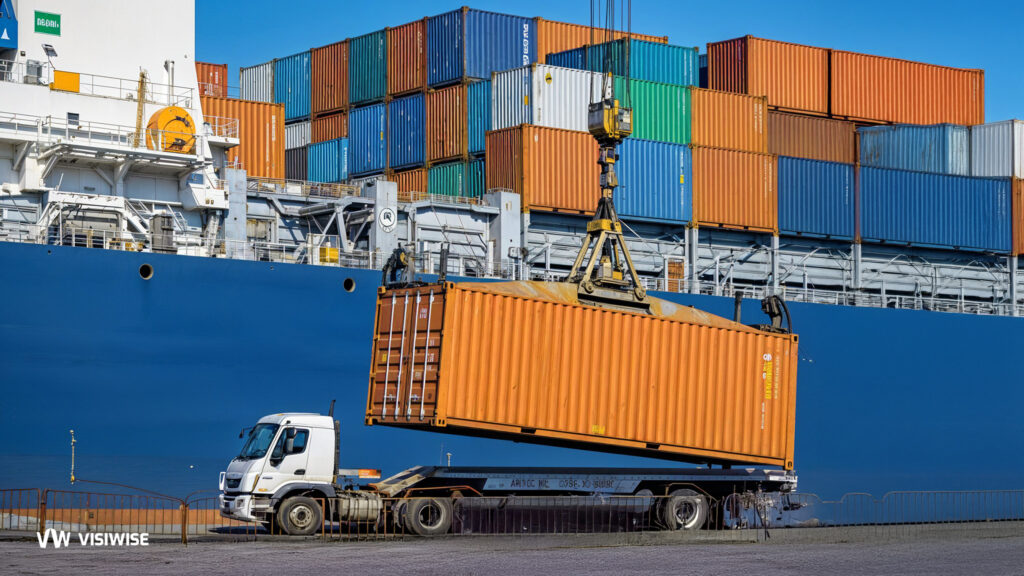The practice of resource sharing has a long history across various societies. Today, with rapid technological advancements and the rise of digital platforms, the sharing economy has emerged as a transformative trend, reshaping how resources are exchanged. This evolution is particularly evident in logistics, where it has opened up new avenues and posed novel challenges for the industry.
In a collaborative economy, individuals depend on each other rather than large corporations to fulfill their desires and requirements. This model encompasses giving, swapping, borrowing, trading, renting, and sharing goods and services for a fee, facilitated by online intermediaries. It is also referred to as the "shared economy," "sharing economy," or "peer-to-peer economy". This article delves into the various aspects of these innovative models, exploring their benefits, challenges, and the future trajectory of the logistics sector.
Understanding Collaborative Economies
Central to the concept of a collaborative economy is the presence of intermediaries that enable consumers to rely on each other. For instance, Uber connects individuals who own cars with those seeking a cost-effective alternative to traditional taxi services. Similarly, Craigslist facilitates transactions where individuals can purchase used vehicles and rent out spare living spaces to one another. Platforms like Etsy further exemplify this model by enabling consumers to buy unique handmade items directly from independent artisans.
A quintessential example of the collaborative economy model is eBay Inc., which has served as a virtual marketplace connecting buyers and sellers since 1995. Operating as a "network orchestrator," eBay fosters a peer-to-peer environment where participants engage in transactions, exchanging goods and services for monetary value and generating mutual benefits.
The term "collaborative economy" may be more accurate than "sharing economy," particularly because intermediaries facilitating such economic exchanges typically charge fees for their services. A 2015 Harvard Business Review article argued that when transactions are facilitated through intermediaries, the more appropriate descriptor might be an "access economy" rather than a sharing economy.
Examples of Collaborative Economy Companies
Companies within the collaborative economy often disrupt established industries, as seen with Uber challenging the taxi industry and Airbnb transforming the hotel sector. These businesses have achieved rapid revenue growth by leveraging digital platforms and smartphone apps to connect buyers and sellers. Trust is fostered through online reviews and sometimes background checks, enabling these exchanges to occur seamlessly.
The collaborative economy encompasses diverse types of businesses. For instance, TaskRabbit allows consumers to hire individuals for tasks ranging from running errands to assembling furniture. Crowdfunding services like Lending Club connect borrowers with multiple lenders who collectively fund loans. Room rental platforms such as Airbnb enable property owners to earn extra income by renting out spare rooms or entire homes to travelers. Additionally, peer-to-peer marketplaces like Poshmark facilitate the resale of high-quality used clothing.
Challenges in the Collaborative Economy
Businesses operating on traditional ownership models face significant challenges from those in the collaborative economy. Research indicates that consumers are increasingly willing to choose sharing over purchasing if it offers at least a 25% cost savings, greater convenience, or access to brand-name products.
Conversely, individuals who participate in sharing economies may also transition to traditional purchasing for similar reasons. Companies rooted in ownership-based models can benefit by partnering with sharing or borrowing-focused enterprises. For example, specialty grocer Whole Foods collaborates with Instacart, a grocery delivery service that allows independent contractors to work flexibly on their own schedules.
One of the major uncertainties for many collaborative economy firms is regulation. Platforms like Uber and Airbnb have encountered widely publicized regulatory battles in numerous cities. Established competitors often raise concerns about consumer safety and market fairness, sometimes validly, sometimes exaggeratedly, leading to attempts to impose restrictive regulations that could either eliminate these newcomers or make their operations more challenging.
Collaboration and Shared Economy Models in Logistics
The logistics industry is currently undergoing a transformative shift, driven by the rise of collaboration and shared economy models. These approaches are reshaping traditional logistics practices, fostering efficiency, reducing costs, and enhancing service delivery. Logistics, the backbone of global trade and commerce, is constantly evolving to meet the demands of a dynamic marketplace. Traditional logistics models, often characterized by siloed operations and proprietary resources, are being challenged by collaborative and shared economy models. These models leverage the collective capabilities of multiple stakeholders, fostering a more efficient and responsive logistics ecosystem.
Understanding Collaborative Logistics
Collaborative logistics involves the partnership of multiple logistics service providers (LSPs), shippers, and other stakeholders to optimize the supply chain. This collaboration can take various forms, including:
Horizontal Collaboration:
Involves collaboration among competitors or similar entities within the same stage of the supply chain. For instance, multiple shipping companies might share transportation assets to maximize vehicle utilization and reduce empty miles.
Vertical Collaboration:
Involves collaboration between different stages of the supply chain, such as manufacturers partnering with retailers and logistics providers to synchronize production schedules, inventory levels, and delivery timelines.
Multi-stakeholder Collaboration:
Involves a broader array of participants, including suppliers, distributors, retailers, and even end customers. This type of collaboration focuses on enhancing the entire supply chain’s efficiency and responsiveness.
The Shared Economy Model in Logistics
The shared economy model, characterized by the sharing of resources and assets among multiple users, has gained significant traction in logistics. This model leverages underutilized assets, such as warehouses, vehicles, and labor, to create a more flexible and cost-effective logistics network. Key components of the shared economy in logistics include:
Shared Warehousing:
Companies can share warehouse space, reducing costs and improving inventory management. This is particularly beneficial for small and medium-sized enterprises (SMEs) that may not require dedicated warehousing facilities.
Crowdsourced Delivery:
Platforms like Uber Freight and Postmates enable individuals to participate in last-mile delivery, leveraging the gig economy to enhance delivery speed and flexibility.
Shared Transportation:
Shared transportation models involve multiple companies sharing transportation assets, such as trucks or cargo ships, to optimize load capacities and reduce transportation costs.
Benefits of Collaboration and Shared Economy Models
The adoption of collaborative and shared economy models in logistics offers numerous benefits:
Cost Efficiency:
By sharing resources and optimizing asset utilization, companies can significantly reduce operational costs. Shared warehousing and transportation lower capital expenditure and operational overheads.
Increased Flexibility:
Collaborative models provide greater flexibility inmanaging logistics operations. Companies can scale their logistics needs up or down based on demand fluctuations without the burden of owning assets.
Enhanced Service Levels:
Collaboration enables better coordination and communication across the supply chain, leading to improved service levels. Faster delivery times, higher accuracy in order fulfillment, and enhanced customer satisfaction are some of the direct benefits.
Risk Mitigation:
Sharing resources and collaborating with multiple stakeholders can mitigate risks associated with supply chain disruptions. Diversifying transportation routes and warehousing locations can enhance resilience.
Sustainability:
Collaborative logistics promotes sustainability by reducing empty miles, optimizing load capacities, and minimizing waste. Shared economy models also encourage the efficient use of resources, contributing to a greener supply chain.
Challenges and Barriers
While the benefits of collaboration and shared economy models are compelling, there are several challenges and barriers to their widespread adoption:
Trust and Data Sharing:
Effective collaboration requires a high level of trust among participants and the willingness to share data. Concerns about data security, confidentiality, and potential misuse can hinder collaboration efforts.
Standardization:
The lack of standardization in processes, technologies, and regulatory frameworks can pose challenges to seamless collaboration. Establishing common standards and protocols is essential for interoperability.
Complexity of Coordination:
Coordinating activities among multiple stakeholders can be complex and time-consuming. Differences in business practices, priorities, and goals can lead to conflicts and inefficiencies.
Technology Integration:
Integrating disparate technological systems used by different participants can be challenging. Investment in compatible technologies and platforms is necessary to enable seamless collaboration.
Regulatory and Legal Issues:
Regulatory and legal issues, such as liability concerns, contractual agreements, and compliance with local regulations, can complicate collaborative efforts. Clear legal frameworks and guidelines are needed to address these issues.
Case Studies
To illustrate the practical application and benefits of collaboration and shared economy models in logistics, let’s examine a few case studies:
#1: C.H. Robinson and Convoy:
- C.H. Robinson, a global logistics company, partnered with Convoy, a digital freight network, to enhance its freight brokerage operations. By leveraging Convoy’s technology platform and extensive carrier network, C.H. Robinson improved load matching, reduced empty miles, and increased operational efficiency. This collaboration exemplifies the benefits of combining traditional logistics expertise with innovative digital solutions.
#2: Procter & Gamble and Tupperware:
- Procter & Gamble (P&G) and Tupperware collaborated on a shared transportation initiative to optimize their logistics operations in Europe. By consolidating shipments and sharing transportation assets, the companies reduced transportation costs, improved load utilization, and minimized environmental impact. This collaboration demonstrates the potential for cost savings and sustainability through shared transportation.
#3: FLEXE:
- FLEXE, a warehousing and fulfillment platform, enables companies to access a network of shared warehousing facilities on-demand. By providing flexible and scalable warehousing solutions, FLEXE helps companies manage seasonal demand fluctuations, reduce warehousing costs, and enhance supply chain agility. This model is particularly beneficial for e-commerce companies facing variable demand patterns.
The Role of Technology
Technology plays a pivotal role in enabling collaboration and shared economy models in logistics. Key technological enablers include:
Cloud Computing:
Cloud-based platforms facilitate real-time data sharing, collaboration, and communication among stakeholders. These platforms provide the scalability and flexibility needed for dynamic logistics operations.
Big Data and Analytics:
Advanced analytics and big data technologies enable companies to gain insights into supply chain performance, optimize routes, predict demand, and enhance decision-making. Data-driven collaboration improves efficiency and reduces risks.
Blockchain:
Blockchain technology enhances transparency, security, and trust in collaborative logistics networks. Smart contracts on blockchain can automate transactions, enforce compliance, and streamline processes.
Internet of Things (IoT):
IoT devices provide real-time visibility into the location, condition, and status of shipments. This visibility is crucial for coordinating activities, optimizing routes, and ensuring timely delivery in collaborative logistics networks.
Artificial Intelligence (AI):
AI-powered algorithms can optimize route planning, load matching, and inventory management. AI enhances decision-making, reduces operational costs, and improves overall supply chain efficiency.
Real-time Visibility Platforms:
Real-time visibility platforms, such as Visiwise, Project44 and FourKites, provide end-to-end tracking and monitoring of shipments. These platforms integrate data from various sources, including IoT devices, GPS, and transportation management systems, to offer a comprehensive view of the supply chain. Real-time visibility enables proactive decision-making, improves customer service, and enhances operational efficiency by providing accurate and timely information on the status and location of goods.
Future Outlook
The future of logistics is likely to be increasingly collaborative and driven by shared economy principles. Several trends and developments will shape this future:
Expansion of Digital Platforms:
The proliferation of digital platforms will facilitate greater collaboration and resource sharing. These platforms will provide end-to-end visibility, connectivity, and coordination across the supply chain.
Increased Adoption of Autonomous Technologies:
Autonomous vehicles, drones, and robotics will play a significant role in collaborative logistics networks. These technologies will enhance efficiency, reduce labor costs, and improve service delivery.
Greater Focus on Sustainability:
Sustainability will remain a key driver of collaboration and shared economy models. Companies will continue to seek ways to reduce their environmental footprint through optimized logistics operations and resource sharing.
Regulatory Evolution:
Regulatory frameworks will evolve to support collaborative logistics models. Governments and industry bodies will establish guidelines and standards to address legal, security, and operational challenges.
Emergence of New Business Models:
Innovative business models, such as logistics-as-a-service (LaaS) and on-demand warehousing, will gain prominence. These models will provide flexible, scalable, and cost-effective logistics solutions.
Final Thoughts
Collaboration and shared economy models represent a paradigm shift in the logistics industry. By leveraging the collective capabilities of multiple stakeholders and optimizing resource utilization, these models offer significant benefits, including cost efficiency, flexibility, enhanced service levels, risk mitigation, and sustainability. However, the successful implementation of these models requires overcoming challenges related to trust, standardization, coordination, technology integration, and regulatory compliance.
As technology continues to advance and the demand for efficient, responsive, and sustainable logistics solutions grows, collaboration and shared economy models will play an increasingly vital role in shaping the future of logistics. Companies that embrace these models and invest in the necessary technologies and partnerships will be well-positioned to thrive in the evolving logistics landscape.



